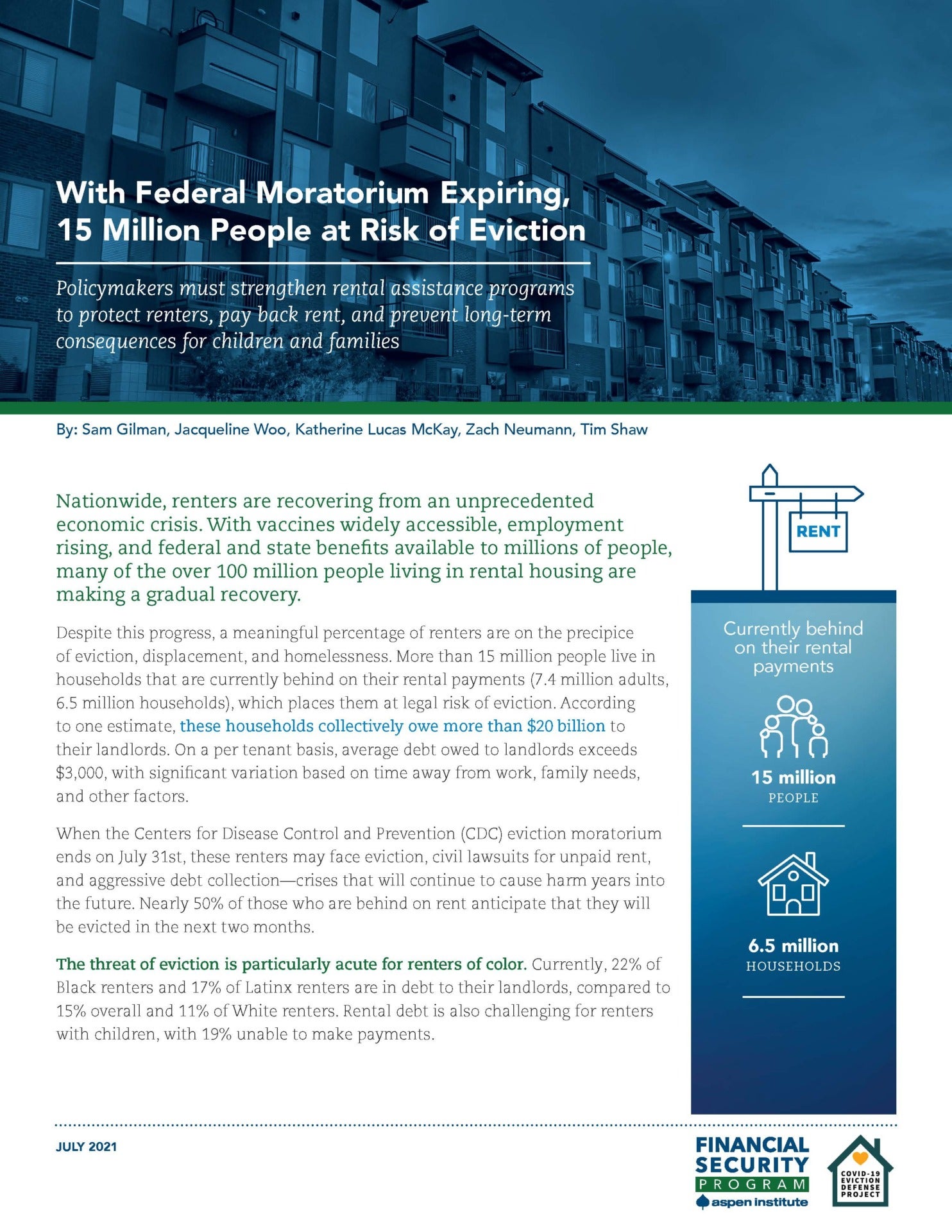Nationwide, renters are recovering from an unprecedented economic crisis. With vaccines widely accessible, employment rising, and federal and state benefits available to millions of people, many of the over 100 million people living in rental housing are making a gradual recovery. Despite this progress, a meaningful percentage of renters are on the precipice of eviction, displacement, and homelessness. More than 15 million people live in households that are currently behind on their rental payments (7.4 million adults, 6.5 million households), which places them at legal risk of eviction. According to one estimate, these households collectively owe more than $20 billion to their landlords. On a per tenant basis, average debt owed to landlords exceeds $3,000, with significant variation based on time away from work, family needs, and other factors.
When the Centers for Disease Control and Prevention (CDC) eviction moratorium ends on July 31st, these renters may face eviction, civil lawsuits for unpaid rent, and aggressive debt collection—crises that will continue to cause harm years into the future. Nearly 50% of those who are behind on rent anticipate that they will be evicted in the next two months. The threat of eviction is particularly acute for renters of color. Currently, 22% of Black renters and 17% of Latinx renters are in debt to their landlords, compared to 15% overall and 11% of White renters. Rental debt is also challenging for renters with children, with 19% unable to make payments.
This report highlights the current number of people at risk of eviction as the federal moratorium expires, how we got here, and policies states can implement to help prevent a wave of evictions from cascading into long-term health and financial crises for millions of households.


